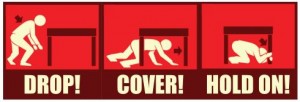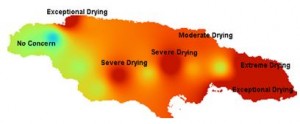Emergencies and disasters often result in significant impacts on people’s health, including the loss of many lives. Deaths, injuries, diseases, disabilities, psychosocial problems and other health impacts can be avoided or reduced by emergency risk management measures involving health and other sectors.
What We Do
The Branch systematically: 1) analyses and manages health risks, posed by emergencies and disasters, 2) develop, implement and monitor medical and health emergency and disaster management programmes at the central, regional and parish levels of the health services, 3) establish and operationalise the MOH National Emergency Operations Centre within four (4) hours of the need, including the mobilisation of staff and other resources and 5) develop, monitor and support the implementation of public information and education programmes for the health aspects of emergency and disaster management.
The activities are conducted through a combination of:
- hazard and vulnerability reduction to prevent and mitigate risk
- preparedness
- response and
- recovery measures
Disaster Tips
To be prepared for an emergency, you should have enough water, food, clothing and emergency supplies to last at least three (3) days. In a catastrophic emergency (gas explosion, building collapse) you might need to be self-sufficient for even longer.
In the event of a hurricane and you have to evacuate (leave) your home, make certain to take:
- Medical supplies: prescriptions, medications
- First Aid Items: Band aid, alcohol, antibiotic ointment
- Disaster supplies: flashlights, batteries, radio, insect repellent, bottled water
- Clothing and bedding: sheets, pillows, pillowcases, protective clothing, sturdy shoes
- Sanitation supplies, (diapers, toilet tissue, soap, feminine hygiene products)
- Dentures, toothpaste, toothbrush
- Non-perishable foods (canned and dry foods)
- Special foods (diabetic or baby foods)
When a Flood is Imminent
- Be prepared! Pack a bag with important items in case you need to evacuate. Don’t forget to include needed medications
- If there is any possibility of a flash flood, move immediately to higher ground
After heavy rainfall and flooding, water may become contaminated. To prevent diseases and maintain good health, it is important to use SAFE WATER. Water can be made safe by treating with household bleach or by boiling.
Bleach
- For 1 litre of water (1 quart)
- Add 2 drops of bleach
- Mix well and leave for 30 minutes
- For 20 litres of water (5 US gallons)
- Add ½ teaspoon of bleach
- Mix well and leave for 30 minutes
- For 170 litres of water (45 US gallons)
- Add 4 ½ teaspoons of bleach
- Mix well and leave for 30 minutes
Boiling
- Allow water to “boil up” for at least one (1) minute before removing from the fire. Cover and let cool.
Treat Water Before it is Used for:
- Drinking or making drinks
- Washing fruits and vegetables
- Making ice
- Preparing food
- Washing dishes and utensils
Service damaged septic tanks, cesspools, pits, and leaching systems as soon as possible. Damaged sewage systems are serious health hazards.
Clean and disinfect everything that got wet. Mud left from floodwater can contain sewage and chemicals.

Before the Earthquake
- Teach all members of your family about earthquake safety. This includes: 1) the actions you should take when an earthquake occurs, 2) the safe places in a room such as under a strong desk, along interior walls, and 3) places to avoid such as near windows, large mirrors, hanging objects, heavy furniture and fireplaces.
- Arrange your home for safety: Store heavy objects on lower shelves and store breakable objects in cabinets with latched doors. Don’t hang heavy mirrors or pictures above areas or furniture where people frequently sit or sleep.
- Anchor heavy appliances and furniture such as water heaters, refrigerators and bookcases.
- Store flammable liquids away from potential ignition sources such as water heaters, stoves and furnaces.
- Learn where the main turn-offs are for your water, gas and electricity. Know how to turn them off and the location of any needed tools.
During the Earthquake
- If you are indoors, stay there. Quickly move to a safe location in the room such as under a strong desk, a strong table, or along an interior wall. Avoid taking cover near windows, large mirrors, hanging objects, heavy furniture, heavy appliances or fireplaces.
- If you are cooking, turn off the stove and take cover.
- If you are outdoors, move to an open area where falling objects are unlikely to strike you. Move away from buildings, power lines and trees.
After the Earthquake
- Check yourself and those around you for injuries, attend to injuries if needed. Help ensure the safety of people around you.
- Check the building you may be in for damage. If your building appears to be damaged you should leave it and not return until it has been inspected by a safety professional.
- If you smell or hear a gas leak, get everyone outside and open windows and doors. If you can do it safely, turn off the gas at the meter. Report the leak to the fire department. Do not use any electrical appliances because a tiny spark could ignite the gas.
Tsunami
Earthquakes, volcanic eruptions and other underwater explosions, landslides and other disturbances above or below water all have the potential to generate a tsunami.
- Tsunamis can move faster than a person can run.
- Move to higher ground.
- Obey the local emergency management office, police, fire and other emergency organizations.
- After the rescue of survivors, the primary public health concerns are clean drinking water, food, shelter, and medical care for injuries.
- All water for use should be treated (flood waters can be contaminated and will cause illness).
- Seek shelter as loss of shelter leaves people vulnerable to insect exposure, heat, and other environmental hazards.
- Seek immediate medical attention for injuries such as: broken limbs and head trauma that may have been caused from people being washed into debris such as houses, trees, and other stationary items.
Fire
- Be prepared; make sure everyone in the household can unlock all doors and windows quickly, even in the dark.
- Make special arrangements for children, older adults, and people with disabilities.
- Practise the escape plan
- Smoke contains deadly gases, and heat rises. During a fire, cleaner air will be near the floor so if you must exit through smoke, crawl on your hands and knees, keeping your head 12 to 24 inches (30 to 60 cm) above the floor.
Drought

Drought is a natural phenomenon in which levels of rainfall or other types of precipitation are lower than average for an extended period of time, resulting in inadequate water supply. It may be considered a transient environmental hazard.
- Special care must be taken when purchasing and storing water.
- Water should only be bought from certified distribution companies.
- New storage container should be thoroughly washed and disinfected.
- Tanks should be installed on an elevated surface, preferably concrete overlaid with board rather than in direct contact with roofing or earth.
- Storage containers should not be installed in proximity to sewerage works to avoid criss-crossing of sewage and water pipes
- Water used for food preparation, drinking and the washing of utensils should be treated (bleach / boil)
